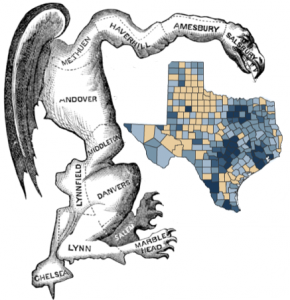Texas Redistricting “Horrible” For Latino Voters
 Latino voters lose under the current redistricting plan passed by the Texas House, according to attorney Rolando Rios, who has more than 30 years worth of experience in redistricting battles in Texas. As the state senate gears up for its own redistricting, News Taco sat down with Rios to ask him what the fate of Latino voters appears to be under the plan as it stands now.
Latino voters lose under the current redistricting plan passed by the Texas House, according to attorney Rolando Rios, who has more than 30 years worth of experience in redistricting battles in Texas. As the state senate gears up for its own redistricting, News Taco sat down with Rios to ask him what the fate of Latino voters appears to be under the plan as it stands now.
Rios told News Taco that Texas has violated voting laws consistently over the past 40 years in: 1970, 1980, 1990, 2000, and 2005. There’s clearly a long record of Texas legislators violating the rights of minority voters in the state (even though now “minorities” make up a majority of the Texas population), Rios told us. This is done in one of two ways:
Packing – Wherein minority voters are packed into one district, so say, they only can use their votes to elect one representative, instead of two if their votes were divided into multiple districts.
Cracking – Wherein minority voters are divided up into multiple districts so their vote is diluted to the point where they have no power to elect anybody.
Texas gained the most congressional districts across the country — four new seats because of growth of 4 million people that was by Rios’ estimate due 80% to minorities. Consequently, Latinos should be getting at least three of these four new seats, but thus far they’ve only received one in the house plan, Rios told News Taco. “They haven’t given us our fair share,” he said, adding the current plan pits current Latino legislators against each other in new districts.
“It’s a horrible plan, it really gerrymanders against Latinos,” Rios told us. There were potential seats to be had along the border, in North Texas and Houston, and existing districts were also redrawn so badly that either only 1.5% of the original district remained, or they ran from the border halfway up the state to Austin.
Latinos should get at least three seats, if not four, and consequently there are three pending lawsuits against the current plan. Rios told us that the federal courts are ultimately the ones that will decide the new district lines, and that should happen by the end of the year, just in time for next year’s March primaries.
Follow Sara Inés Calderón on Twitter @SaraChicaD
[Video By News Taco; Image Created By Census And Elkanah Tisdale]
